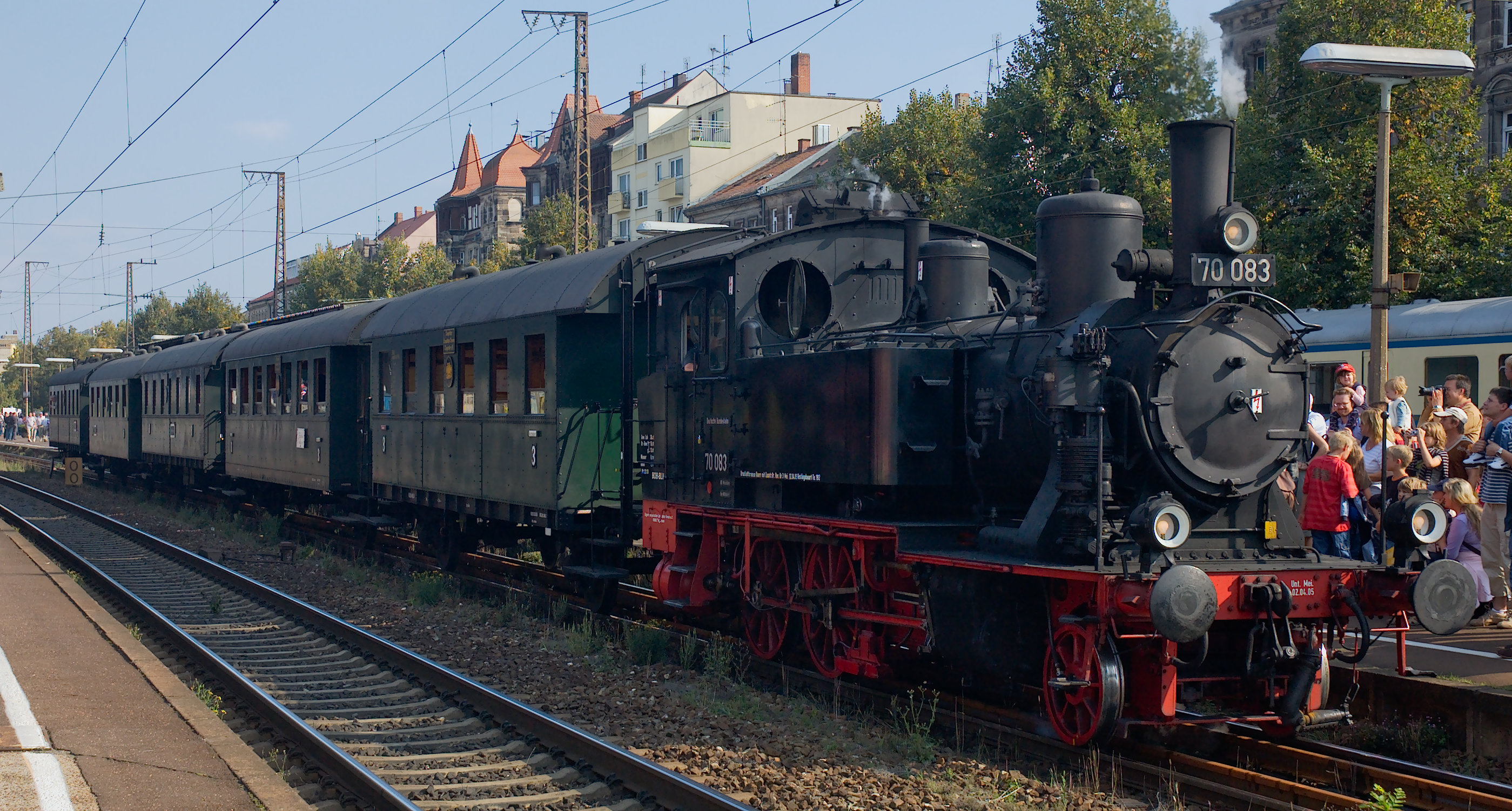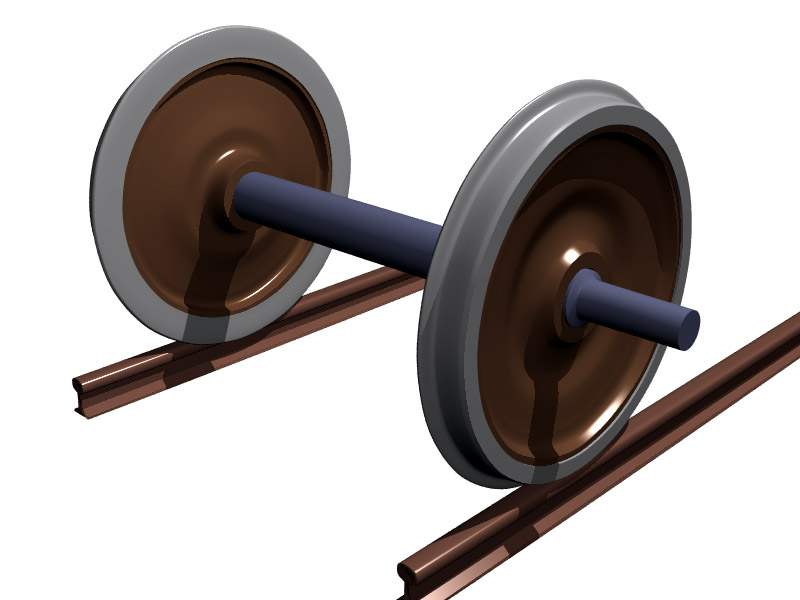|
Lokalbahn
A ''Lokalbahn'' or ''Localbahn'' ("local line", plural: -en) is a secondary railway line worked by local trains serving rural areas, typically in Austria and the south German states of Bavaria and Baden-Württemberg. ''Lokalbahnen'' appeared at the end of the 19th century before the use of cars became widespread. Development Because the construction and operation of main line railways was not always covered by their income, simpler solutions were sought. As early as 1865 the engineering conference of the Union of German Railway Administrations (''Verein Deutscher Eisenbahnverwaltungen'') had set out the principles for secondary lines. These were enshrined in law in 1878 with the Railway Act for German Railways of Secondary Importance (''Bahnordnung für deutsche Eisenbahnen untergeordneter Bedeutung''). Bavaria By the 1880s, the Bavarian main line network was largely completed and attention now turned to its expansion into the hinterland. On 21 April 1884 the first Bavaria ... [...More Info...] [...Related Items...] OR: [Wikipedia] [Google] [Baidu] |
Badner Bahn
The Badner Bahn or Wiener Lokalbahn is a tram-train service in the metropolitan area of Vienna. It runs for between Vienna and Baden, and is operated by the Wiener Lokalbahnen Aktiengesellschaft. The entire Badner Bahn is part of the and is one of the most important passenger services owned by WLB. In 2013, 35,000 passengers per day used the service. Route Starting from the Vienna State Opera, the service uses the tracks of Vienna's tram network as far as the Schedifkaplatz tram stop in the Meidling district, including parts of a pre-metro tram tunnel. From Schedifkaplatz to Leesdorf in Baden and between Leesdorf and Josefsplatz, the train service has its own infrastructure, of double-track light rail and of tram line, respectively. These tracks are owned and maintained by Wiener Lokalbahnen. Since 14 December 2014, there is a new train station at the state clinical center (german: Landesklinikum) in Baden. Despite its addition to the route, the length of a journey coul ... [...More Info...] [...Related Items...] OR: [Wikipedia] [Google] [Baidu] |
Bavarian Branch Lines
Bavarian branch lines comprised nearly half the total railway network in Bavaria, a state in the southeastern Germany that was a kingdom in the days of the German Empire. The construction era for branch lines lasted from 1872, when the first route, from Siegelsdorf to Langenzenn, was opened, to 1930, when the last section of the branch from Gößweinstein to Behringersmühle went operational. History The first German railway line was opened in Bavaria in 1835. This was the '' Ludwigsbahn'' (Ludwig's Railway) from Nuremberg to Fürth which opened on 7 December 1835. This was the start of a railway building frenzy, which rapidly spread across the state. The second Bavarian railway line, from Munich to Augsburg, soon followed. The early railways were private lines, but from 184?, the Bavarian state oversaw the construction of railways, through its state-owned railway company, the Royal Bavarian State Railways. The most important routes were established first, of course, and beca ... [...More Info...] [...Related Items...] OR: [Wikipedia] [Google] [Baidu] |
Bavarian Localbahn Society
The Bavarian Localbahn Society (''Bayerischer Localbahnverein e.V.'' or BLV), with its headquarters in Tegernsee, is a society that is concerned with the history of the railways in Bavaria. ''Localbahn'' (sometimes ''Lokalbahn''; literally: 'local line') means ' branch line' and is mainly used in southern Germany and Austria in lieu of the usual term ''Nebenbahn''. The BLV's objectives are the operation of historic trains and the collection of historically valuable railway items from Bavaria. Operations The society runs the ''Localbahn Museum'' in Bayerisch Eisenstein and a locomotive shed in Landshut. It also operates the museum railway Tegernsee-Schaftlach-Holzkirchen Localbahn Museum The BLV dedicated its museum to the once common branch lines of the railway - called ''Vicinalbahnen'', ''Sekundärbahnen'' or ''Localbahnen'' - which connected most of Bavaria in the 19th century. Many of them have now fallen prey to the structural changes or have been changed to suburban ... [...More Info...] [...Related Items...] OR: [Wikipedia] [Google] [Baidu] |
PwPost Bay 06
The PwPost Bay 06 was a combined mail and luggage van designed for '' Lokalbahn'' branch line train services with the Royal Bavarian State Railways in the early 20th century. It was built to their Design Sheet Number 606. Development As Bavaria's network of ''Lokalbahn'' railways grew so did the requirement for suitable coaches for local passenger transport. Because the only motive power available were tank locomotives with low tractive power, such as the PtL 2/2, coaches of a special lightweight construction were needed. Procurement Between 1905 and 1911 a total of 281 wagons of classes ''BL'', ''BCL'', ''CL'' and ''PPostL'' were procured, all of which - except for the wagons of Class ''PPostL'' - had a uniform floor plan, open platforms at each end with Dixi gates on the steps and gangways only protected by a single iron railing. Large window panes were fitted instead of the composite windows that had been usual up to that point. They are sometimes referred to as 'the sho ... [...More Info...] [...Related Items...] OR: [Wikipedia] [Google] [Baidu] |
CL Bay 06b
The Bavarian CL Bay 06b was a short open coach for branch line services with the Royal Bavarian State Railways (k.Bay.Sts.B.). It was listed in their 1913 fleet register under Design Sheet No. 570. Development With the growth of the branch line network in the Kingdom of Bavaria, there was a need for suitable coaches on the so-called ''Lokalbahnen'' or local railway lines. Since the only available locomotives were tank engines with low tractive power, such as the Class PtL 2/2, passenger coaches of a particularly light design were required. These coaches were not suitable for military transport. Procurement Between 1905 and 1911 a total of 281See also Sheet no. 499, 523, 568, 569, 570, 605 and 606 of the 1913 Bavarian railway fleet register wagons of classes ''BL'', ''BCL'', ''CL'' and ''PPostL'' were procured, all of which - except for the wagons of Class ''PPostL'' - had a uniform floor plan, open platforms at each end with Dixi gates on the steps and gangways only protec ... [...More Info...] [...Related Items...] OR: [Wikipedia] [Google] [Baidu] |
Glaskasten
The Class PtL 2/2 locomotives of the Royal Bavarian State Railways (''Königlich Bayerische Staatseisenbahn'') were light and very compact superheated steam locomotives for operation on Bavarian branch lines (known generally as ''Lokalbahnen''). There were three types in total, of which two were transferred to the Deutsche Reichsbahn-Gesellschaft as Class 98.3 tank locomotives and even survived to join the Deutsche Bundesbahn fleet after the Second World War. Common to all the variants was the B axle arrangement (European or UIC classification) or 0-4-0 (Whyte notation), the semi-automatic, gravity-feed firing that enabled one-man operation, and platforms with guard rails, front and rear, that enabled safe access to the coaches. The locomotives had a large driver's cab with 3 windows per side that surrounded the entire locomotive boiler as far as the smokebox. This unique feature earned it the nickname ''Glaskasten'' ("glass box") or, in Franconia, ''Glas-Chaise'' ("glass carria ... [...More Info...] [...Related Items...] OR: [Wikipedia] [Google] [Baidu] |
Tyrolean Museum Railways
The Tyrolean Museum Railways or Tiroler MuseumsBahnen (TMB) is a railway society in Austria whose aim is the preservation and/or documentation of the historically important branch lines (known as ''Localbahnen'') and their rolling stock in the state of Tyrol. The Tyrolean Museum Railways have three main spheres of operation: * The Tyrolean Localbahn Museum (''Tiroler Localbahnmuseum'') in Innsbruck * A collection of rolling stock that includes some of the most valuable, historic vehicles from the Tyrolean branch lines * A club whose members voluntarily run the Localbahn Museum, restore and renovate historic vehicles and restaurieren operate special trips using working trains. History When, in 1983, it finally became clear that the 79-year-old railbuses on the Stubai Valley Railway (''Stubaitalbahn'') were to be withdrawn from service, the Tiroler MuseumsBahnen Society was founded in May of that same year "with the aim of preserving these historically important vehicles for poste ... [...More Info...] [...Related Items...] OR: [Wikipedia] [Google] [Baidu] |
Pinzgauer Lokalbahn Vs81 , or Pinzgaubahn; a railway in the area.
{{disambiguation ...
Pinzgauer may refer to: * An inhabitant of the Pinzgau, in the state of Salzburg, Austria * The Pinzgauer Cattle breed * The Steyr-Puch Pinzgauer, an off-road vehicle * The Noriker horse breed, also known as Pinzgauer or Norico-Pinzgauer * The Pinzgauer Lokalbahn The Pinzgauer Lokalbahn (formerly Pinzgaubahn or Krimmler Bahn) is a narrow-gauge railway in Salzburg in Austria Austria, , bar, Östareich officially the Republic of Austria, is a country in the southern part of Central Europe, lyin ... [...More Info...] [...Related Items...] OR: [Wikipedia] [Google] [Baidu] |
Axle Load
An axle or axletree is a central shaft for a rotating wheel or gear. On wheeled vehicles, the axle may be fixed to the wheels, rotating with them, or fixed to the vehicle, with the wheels rotating around the axle. In the former case, bearings or bushings are provided at the mounting points where the axle is supported. In the latter case, a bearing or bushing sits inside a central hole in the wheel to allow the wheel or gear to rotate around the axle. Sometimes, especially on bicycles, the latter type axle is referred to as a '' spindle''. Terminology On cars and trucks, several senses of the word ''axle'' occur in casual usage, referring to the shaft itself, its housing, or simply any transverse pair of wheels. Strictly speaking, a shaft which rotates with the wheel, being either bolted or splined in fixed relation to it, is called an ''axle'' or ''axle shaft''. However, in looser usage, an entire assembly including the surrounding axle housing (typically a casting) is ... [...More Info...] [...Related Items...] OR: [Wikipedia] [Google] [Baidu] |
BCL Bay 05
BCL may stand for: Law & Politics * Bachelor of Civil Law, the term used to describe a variety of legal degrees offered by universities in English-speaking countries (as distinct from Canon Law and Common Law) * Bangladesh Chhatra League, the student wing of Bangladesh Awami League * British Common Law, the legal system, developed in England after the Norman Conquest in 1066, used by approximately one third of the global population. Logic * Binary combinatory logic People * Bunga Citra Lestari, Indonesian actress and singer Science * Members of the Bcl-2 family, a group of related proteins involved in apoptosis, particularly bcl-2 Sports * Baltimore Catholic League * Bangladesh Championship League, 2nd tier of Bangladesh football league system * Bangladesh Cricket League, an annual four-team first-class cricket competition in Bangladesh * Either one of two leagues that form the Bay Area Conference, part of the North Coast Section of the California Interscholastic Federation * ... [...More Info...] [...Related Items...] OR: [Wikipedia] [Google] [Baidu] |
Austria
Austria, , bar, Östareich officially the Republic of Austria, is a country in the southern part of Central Europe, lying in the Eastern Alps. It is a federation of nine states, one of which is the capital, Vienna, the most populous city and state. A landlocked country, Austria is bordered by Germany to the northwest, the Czech Republic to the north, Slovakia to the northeast, Hungary to the east, Slovenia and Italy to the south, and Switzerland and Liechtenstein to the west. The country occupies an area of and has a population of 9 million. Austria emerged from the remnants of the Eastern and Hungarian March at the end of the first millennium. Originally a margraviate of Bavaria, it developed into a duchy of the Holy Roman Empire in 1156 and was later made an archduchy in 1453. In the 16th century, Vienna began serving as the empire's administrative capital and Austria thus became the heartland of the Habsburg monarchy. After the dissolution of th ... [...More Info...] [...Related Items...] OR: [Wikipedia] [Google] [Baidu] |




